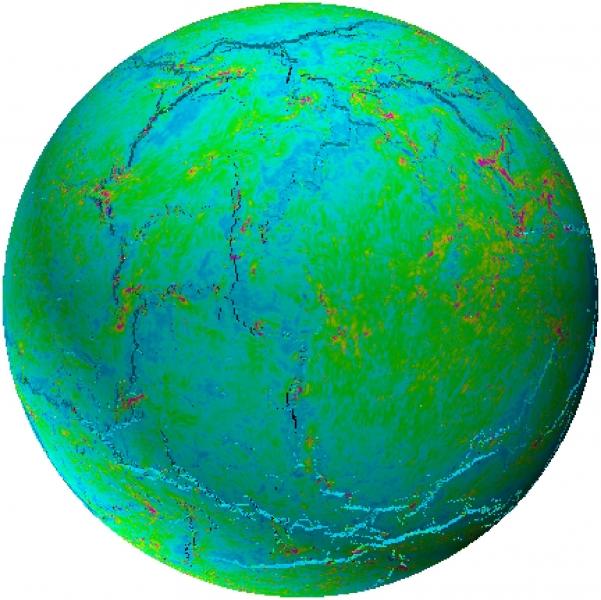How did Earth crack? New study may explain origins of plate tectonics on our planet.
Long ago, Earth's outer shell cracked into pieces, which we now call tectonic plates. In a new study, scientists investigated the origins of plate tectonics and found its history rooted in Earth.
Approximately 4.5 billion years ago our home planet formed and, not too soon after — about 3.2 billion years ago — Earth's shell cracked into these plates. Now, while scientists know how Earth's tectonic plates shift and move, exactly how they got started has remained somewhat of a mystery.
In a new study, led by planetary scientist Alexander Webb at the University of Hong Kong, in collaboration with an international team of researchers, scientists have come up with a new idea to explain why Earth's crust cracked into pieces.
Related: Plate tectonics may have begun a billion years after Earth's birth
According to the study, the early Earth's outer shell, or lithosphere, heated up, which caused it to expand and crack. This might seem like a simple explanation, but it contradicts many earlier theories.
Previous studies have estimated that thermal expansion would be less likely to crack Earth's surface than thermal contraction, the opposite process by which Earth's outer shell shrinks as it cools. Because much of Earth's internal heat stems from radioactivity, radioactive decay would cause the planet's interior to cool over time, those studies have suggested.
But, according to Webb, the answer to Earth's tectonic origins "lies in consideration of major heat-loss mechanisms that could have occurred during Earth's early periods," they said in a statement. "If volcanic advection, carrying hot material from depth to the surface, was the major mode of early heat-loss, that changes everything."
Breaking space news, the latest updates on rocket launches, skywatching events and more!
Here, Webb referred to a method of heat loss involving volcanic advection, or the transfer of heat or matter via the movement of fluid. In this process, hot volcanic material would erupt and fall back onto the earth as the heat would escape to space and the material would cool and press into Earth's young crust, creating a cooling effect. The chilled lithosphere "would have been increasingly warmed via conduction from hot deep material below," according to the statement.
Webb's team used 3D spherical models to simulate how Earth's outer shell may have fractured in response to thermal expansion amidst varying heating and cooling in Earth's early years. They found that while there was global cooling in Earth's early years, the outer shell was warming at the same time, which is the most likely cause behind our planet's crust breaking apart.
This work was published July 17 in the journal Nature Communications.
Email Chelsea Gohd at cgohd@space.com or follow her on Twitter @chelsea_gohd. Follow us on Twitter @Spacedotcom and on Face

Chelsea “Foxanne” Gohd joined Space.com in 2018 and is now a Senior Writer, writing about everything from climate change to planetary science and human spaceflight in both articles and on-camera in videos. With a degree in Public Health and biological sciences, Chelsea has written and worked for institutions including the American Museum of Natural History, Scientific American, Discover Magazine Blog, Astronomy Magazine and Live Science. When not writing, editing or filming something space-y, Chelsea "Foxanne" Gohd is writing music and performing as Foxanne, even launching a song to space in 2021 with Inspiration4. You can follow her on Twitter @chelsea_gohd and @foxannemusic.

